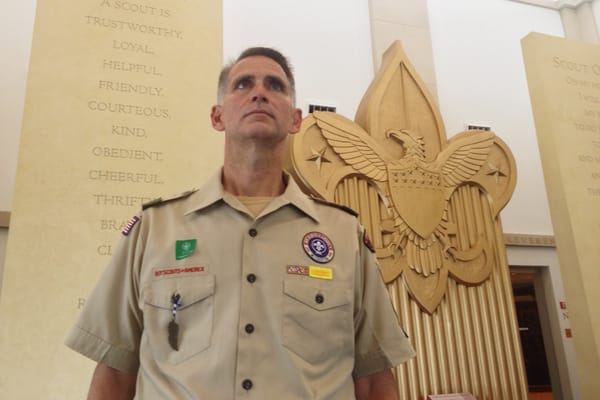Want to make trans youth feel more welcome? Start with this training
This resource can help start the conversation in your council.

The Boy Scouts of America has not publicly released many resources for adults looking to support transgender and gender-nonconforming youth—but a pair of volunteers in one council is helping to fill the gap.
Wendell Baker, a Scouter in the California Bay Area, had been fielding questions from volunteers—about terms and pronouns especially—for years. Meanwhile, Reese Hansen, a Scoutmaster in the same council, wanted to do more to support the gender-nonconforming kids in their charge—including their own child.
- The two met at Wood Badge, where Baker was on staff and Hansen was going through the course. Hansen, who is gender-nonconforming, felt a sense of acceptance during the course that they don't usually experience in Scouting, and decided to make part of their ticket a service to the LGBTQ+ community.
- With help from Baker, Hansen created a presentation for the council's Leader Education and Discovery program, akin to the University of Scouting. The session was titled, "Making Trans and Gender Non Conforming Scouts Feel Welcome."
The training covers lots of foundational knowledge about gender and sexuality. It also gives answers to common questions about tenting and bathroom arrangements. Baker said the goal was to decrease the fear that sometimes prevents adults from talking about trans Scouts.
- "We need to talk about this kind of stuff. It's hard, it's difficult, but if we practice talking about it, then we can talk about it some more," Baker told me.
- Hansen agreed: They wanted the training to help adults figure out the logistics necessary to let trans youth thrive. "Letting kids be who they are in Scouting, that’s the goal," they said.

How you can make use of this training
Baker and Hansen have publicly shared this slide deck in hopes that others will adapt the training session for their own needs, in venues like the University of Scouting at local councils.
Baker and Hansen plan to continue updating the presentation based on feedback, and it probably makes sense for you to adapt it to your own knowledge and comfort level, too.
- While their first version of the session was an hour, Hansen said it could easily go to 90 minutes or two hours, allowing for more time for Q&A especially.




